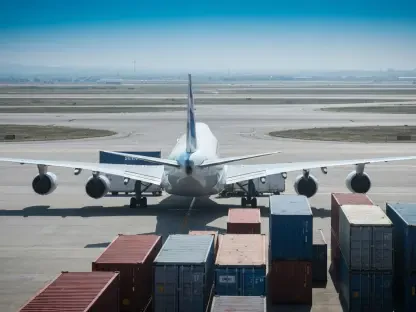As we stand in 2025, the logistics industry faces an unprecedented series of challenges that require both innovation and adaptability to overcome. Rising operational costs, geopolitical complexities, and enduring environmental disruptions create a daunting landscape for industry players. In response, logistics stakeholders are leveraging technology, aligning practices with resilient and sustainable strategies, and embracing e-commerce opportunities as bright spots in uncertain environments.
Overview of the Logistics Industry
The global logistics sector remains an integral backbone of the world economy, enabling the efficient movement of goods across interconnected supply chains. Despite its significance, the industry grapples with an array of challenges that threaten stability. Factors such as economic uncertainties, geopolitical tensions, and environmental upheavals demand an intricate balance of adaptability and innovation. Key industry segments that play crucial roles in this environment include real-time inventory visibility, speedy last-mile delivery, and automation.
Market giants and emerging players are rapidly adapting to these evolving conditions. The swift growth of e-commerce underscores this adaptation. Retail sales amounting to an impressive $6.3 trillion highlight e-commerce’s prominence, demanding enhanced logistics efficiencies. Major logistics providers, such as third-party logistics (3PL) services, specialize in offering comprehensive supply chain support amid these dynamic changes, establishing themselves as pivotal figures in shaping outcomes despite formidable market challenges.
Emerging Trends and Growth Opportunities
Key Trends Shaping the Industry
Innovative technologies and shifting consumer behavior are spearheading transformative changes across the logistics landscape. The increasing adoption of AI and automation signifies a pivotal shift toward real-time decision-making and addressing labor shortages. The rise of e-commerce propels logistics operations, requiring efficient last-mile delivery solutions to meet consumers’ growing demands. Alongside these technological shifts, newer market opportunities emerge as businesses seek sustainable methods to address logistical challenges.
Evolving consumer expectations fortify new dynamics within the industry, offering opportunities for growth through enhanced agility. The digitalization of operations allows businesses to capture real-time data, optimizing routes and improving customer service. Such technology-driven transformations contribute significantly to supplying timely solutions to logistics challenges, marking a new frontier of efficient operations and futuristic growth.
Market Data and Future Forecasts
The logistics sector’s performance, as measured by several key indicators, showcases a dual narrative of opportunity and complexity. The industry’s share of global GDP stands as a testament to its economic importance, even as operational costs exert pressure on businesses. U.S. business logistics costs, for example, reached $2.6 trillion, a notable 5.4% annual increase. Predictions further emphasize that the global logistics market will reach $5.9 trillion by 2030, driven by an impressive 7.2% CAGR.
This upward trajectory is tinged with caution, highlighting the need to navigate existing uncertainties expertly. Noteworthy growth forecasts extend beyond current statistics to suggest continued expansion, driven by technological advancements and more extensive global reach. With these projections, logistics companies must remain proactive and forward-thinking, adopting strategic approaches to ensure sustained success.
Challenges and Strategic Solutions
The logistics industry must contend with varied challenges impeding growth, including regulatory pressures, technological shortfalls, and shifting market conditions. Navigating these obstacles demands resilience and adaptability as businesses face constraints and volatile rates in ocean freight. The reliance on 3PL services provides crucial end-to-end support in unpredictable climates.
Addressing these difficulties also requires innovative strategies for resilience and sustainability. Integrating advanced technologies like AI and automation provides practical solutions to counter declining productivity, offering a forward-thinking path to overcoming growth impediments. Encouraged by these technological strides, companies must develop innovative approaches to remain agile and responsive to ever-evolving challenges.
Regulatory Landscape and Industry Impacts
The logistics industry operates within a regulatory framework that is continuously changing and evolving. Compliance with significant laws and standards becomes crucial in a landscape where security and efficiency are paramount. Regulatory dynamics significantly impact industry practices, shaping priorities such as transparency and sustainability to align with legal requirements.
Logistics businesses must prioritize adherence to regulations to mitigate potential legal risks and enhance their market positions. Implementing cornerstones of compliance ensures that operations remain on track, balancing regulations and innovation to seize opportunities while maintaining industry standards. Collective efforts to address and navigate regulatory obligations improve sector resilience and competitiveness.
Future Directions and Innovations
Insights into future directions within the logistics industry showcase promising technologies and evolving consumer preferences. Continued progress in AI and automation presents disruptive possibilities, reshaping industry operations. Revolutionizing logistics requires foresight, with a focus on technologies poised to deliver agile and efficient solutions to pressing operational challenges.
Emerging technological advancements underscore future opportunities, highlighting avenues for growth and exploration. As innovative solutions take hold, logistics stakeholders must remain attuned to rapidly shifting consumer needs, facilitating a harmonious alignment between technological advancements and market demands. This anticipatory approach will define the industry’s future trajectory and success metrics.
Conclusion and Strategic Recommendations
Emerging from an era marked by unpredictability, the logistics industry has navigated transformative challenges to chart a path forward. The report emphasizes key areas for growth and investment within ever-evolving market conditions. With the rise of e-commerce and technological innovations, opportunities abound for industry players, contingent upon their ability to embrace adaptability and strategic planning.
In the quest for sustained growth, logistics professionals must focus on solutions to counter existing challenges and anticipate future complexities. Strategic approaches include embracing sustainable practices, nurturing technological integration, and adopting resilient global supply chains. By remaining diligent in adapting to changes and capitalizing on innovations, logistics businesses can secure prosperous outcomes in the midst of an ever-changing industry landscape.









